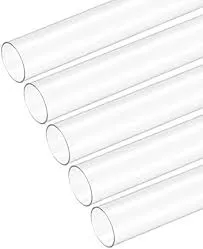ធ្នូ . 12, 2024 11:16 Back to list
hdpe pipe jointing
HDPE Pipe Jointing Techniques, Benefits, and Applications
High-Density Polyethylene (HDPE) pipes are widely recognized for their durability, flexibility, and resistance to corrosion, making them an ideal choice for a variety of applications, including water distribution, sewage disposal, and industrial uses. However, the effectiveness of HDPE pipes is significantly influenced by the integrity of their joints. Proper jointing techniques are crucial to ensure long-term performance and reliability. In this article, we will explore the different methods of HDPE pipe jointing, their benefits, and their applications.
Common Methods of HDPE Pipe Jointing
1. Electrofusion This is one of the most popular methods for joining HDPE pipes. Electrofusion involves the use of special fittings that contain electrically heated coils. When electricity is applied, these coils heat up and melt the surface of the pipe and the fitting, allowing them to fuse together as they cool. This method is highly reliable, creates strong joints, and is suitable for larger diameter pipes.
2. Butt Fusion This technique involves heating the ends of two HDPE pipe sections until they melt, then bringing them together under pressure to create a seamless joint. Butt fusion joints are often used in larger diameter pipes and are known for their exceptional strength and integrity. The process is relatively quick and can be performed on-site with the right equipment.
3. Socket Fusion In this method, the end of a pipe is heated and then inserted into a suitably sized socket fitting. The heat causes both surfaces to melt, and they are then held together until they cool and solidify. Socket fusion is typically used for smaller diameter pipes and can be advantageous in tight spaces where other methods are less feasible.
4. Mechanical Joints These joints involve the use of mechanical fittings such as clamps or flanges. While mechanical joints may not create as strong a bond as fusion methods, they offer flexibility and ease of disassembly, which can be advantageous in maintenance situations. Mechanical joints are also useful when working with existing pipelines or in situations where fusion cannot be performed due to environmental conditions.
Benefits of Proper Jointing
Using the right jointing technique for HDPE pipes has several advantages
- Leak Prevention Properly fused or mechanically joined pipes minimize leaks, which is crucial for water and gas transmission systems. Leakage can lead to costly repairs and environmental hazards.
- Strength and Durability Fusion methods provide high-strength joints that can withstand significant pressure and stress, ensuring that the pipeline remains intact for years to come.
hdpe pipe jointing

- Resistance to Corrosion HDPE is inherently resistant to corrosion, and proper jointing enhances this property. This makes HDPE pipes suitable for various harsh environments.
- Cost-Effectiveness Although the initial investment for equipment and fittings may be higher for fusion methods, the long-term savings from reduced maintenance and lower failure rates can outweigh these costs.
Applications of HDPE Pipe Jointing
The versatility of HDPE and its jointing methods makes it suitable for numerous applications, including
- Water Distribution HDPE pipes are used extensively in municipal water supply systems due to their ability to handle high pressures and resist corrosion.
- Sewage and Wastewater Management The non-corrosive nature of HDPE makes it an ideal choice for handling sewage and industrial wastewater.
- Telecommunications HDPE conduits are often employed for underground telecommunications cables, protecting them from moisture and physical damage.
- Agricultural Applications HDPE irrigation systems benefit from durable joints that can withstand the pressures of high-volume water flow.
Conclusion
HDPE pipe jointing is a critical component in ensuring the efficacy and longevity of HDPE piping systems. Electrofusion, butt fusion, socket fusion, and mechanical joints each offer unique advantages depending on the specific requirements of a project. As industries continue to embrace HDPE for its various benefits, understanding the best practices for jointing will remain essential for successful implementation and maintenance of HDPE pipelines. By choosing the appropriate jointing method, engineers and contractors can enhance the reliability of their systems, ultimately leading to improved performance and reduced costs over time.
-
Durable Glossy PVC Rigid Sheet | Premium High-Shine Panels
NewsAug.26,2025
-
Durable PP Rigid Sheet: Lightweight, Chemical Resistant Solutions
NewsAug.21,2025
-
PVC Grey Sheet for Extraction: Chemical Resistant & Durable
NewsAug.19,2025
-
Durable PVC Pipe Fittings for Plumbing & Irrigation Needs
NewsAug.18,2025
-
HDPE Steel Belt Reinforced Spiral Corrugated Pipe | High Strength
NewsAug.17,2025
-
HDPE Pipe Fittings: Durable, Leak-Proof Solutions
NewsAug.16,2025

